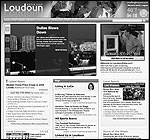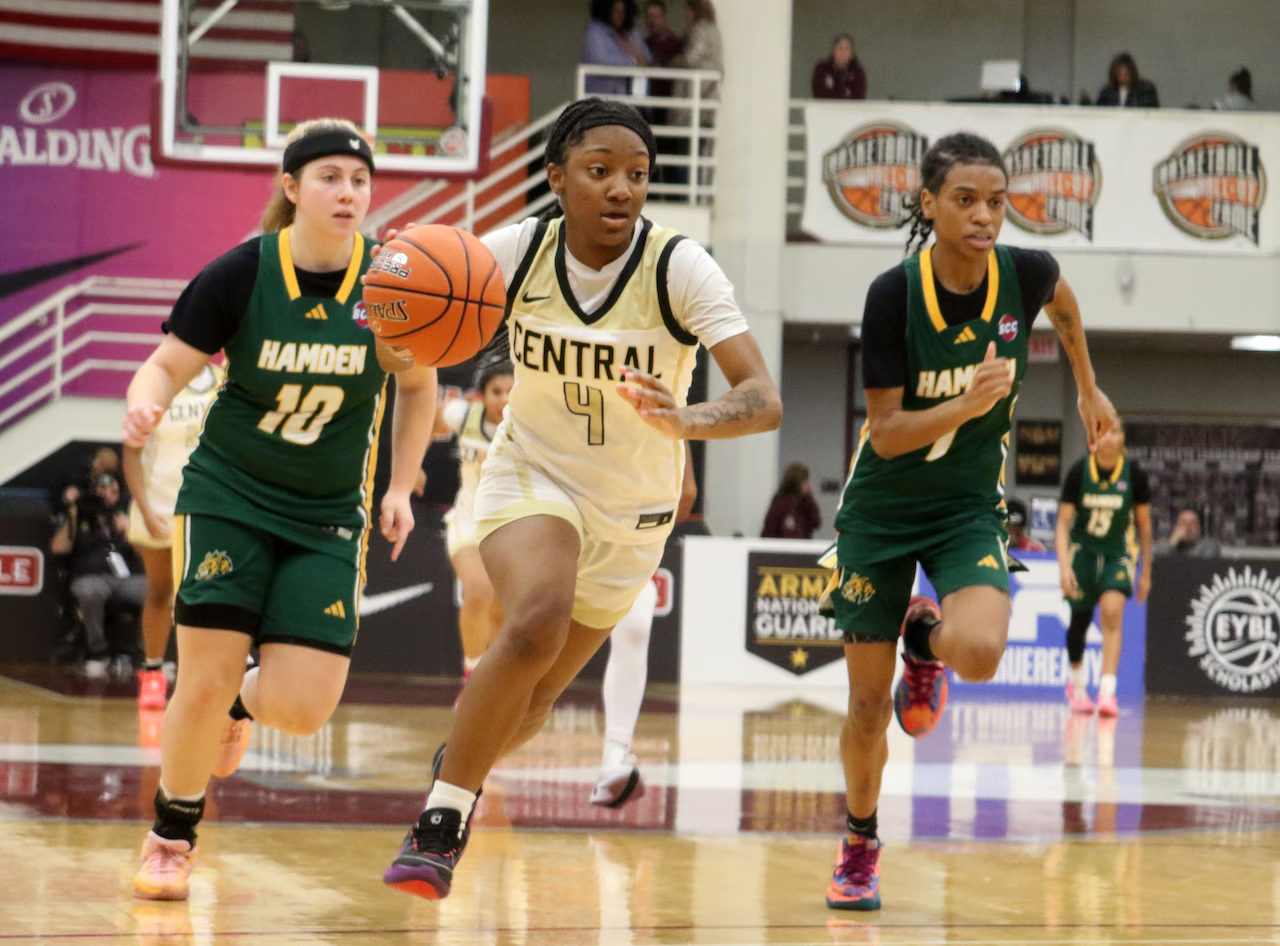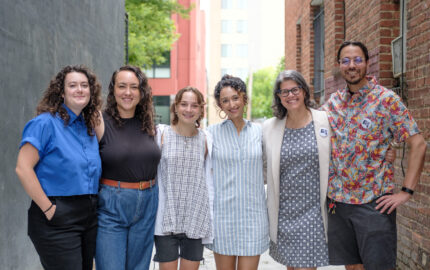
I grew up in a three-newspaper household. In the morning, my family got the regional daily out of Topeka, Kansas; in the evening, we got the even more regional afternoon paper from either Ottawa or Emporia (depending on who had the best deal) and, once a week, we got the hometown Osage City Journal-Free Press. To this day, my newspaper sensibilities are directly related to the papers I read as I was growing up.
Overkill sports coverage for my beloved Kansas Jayhawks came from the Topeka newspaper. Coverage of our local high schools and obits for our town were in the Ottawa newspaper. And the Osage paper had great local letters to the editor, as well as the reports from local nursing homes about who had visitors that week, as well as pictures from the Osage County Fair and parades.
When the team I was a part of was asked to build Web sites for the newspapers I worked at in Kansas (the Lawrence Journal-World and The Topeka Capital-Journal), we basically pulled from the news menus of our childhoods. It’s what we knew, and even though most of the journalism we’ve created during the past decade has been delivered via the latest technology instead of with ink on paper, the content has not been far removed from the newspapers I grew up reading in Osage City.
In today’s world of labels for everything, people call this “hyperlocal” journalism and tend to act like it’s something very new. Trust me, this ain’t new. If anything, it’s old school local journalism.
Hyperlocal Goals
AUTHOR'S NOTE
Many key members of this team have worked together for nearly a decade since they began at newspapers in Kansas.
They moved to the Naples (Fla.) Daily News in 2005, where others joined the team that went in the fall of 2006 to The Washington Post. Only one member of the current hyperlocal effort joined the team at the Post.In the fall of 2006, when our online team walked through the newsroom of The Washington Post—the paper that hired us to create a venue for local news on its Web site—we knew we weren’t in Kansas anymore. In front of us sat some of the world’s most talented journalists who were watching government’s every move, while overseas their colleagues were risking their lives to tell their readers about the Iraq War. Especially in this age of corporate journalism and big newsroom cutbacks, I have a deep admiration and respect for what it means for an organization like the Post to have bureaus all over the country and world to continue our essential role as a member of the Fourth Estate.
Each morning, it’s amazing to me to see all of this journalism with a capital “J” coming from the newspaper where I work. But even at the Post there needs to be journalism with a lower-case “j” since it is still also the local newspaper for millions who live in the D.C. area. And it turns out that responding to this obligation doesn’t look dramatically different than what we did at our local newspaper Web sites in Kansas.
What I’ve come to realize is that what is important to people is basically the same no matter how long their daily commute is. And that’s where LoudounExtra.com comes in. It is washingtonpost.com’s first step in creating hyperlocal sites that readers connect to in much the same way I related to the newspapers I grew up with in Kansas, which means that relevance and relationship are at its core.
Our goal was never to build a traditional local newspaper site. We were determined to give readers an online experience very different from the typical one of simply finding stories that appeared in the newspaper. Since as far as we can tell no one seems to know what “hyperlocal” really means, we took a stab at what we thought it meant as we built the site.
We knew that news, lots of news, had to be at its center, regardless of whether that news came from Post reporters or online reporters or from bloggers. There are big-time local stories on LoudounExtra.com, the kind readers expect Post reporters to give them. But there also are truly local stories, like police reports about stolen iPods—just like the stuff I might have read in those small Kansas newspapers.
But our goals for the site weren’t just journalistic. There was a fair amount of capitalism being discussed with every move we made. The site needed to be an affordable and very targeted advertising vehicle. We wanted the ads on LoudounExtra.com to feel as relevant to our readers as they do in print. Let me explain: For years, I’d watched how my family looked at the ads in newspapers as content. Ads mattered to them. They looked forward to the ads as much, if not more, than they did the stories and photos in the newspaper. And this sentiment hasn’t changed. Recently I saw folks buy the “bulldog” Sunday edition of The Washington Post on a Saturday morning at a local grocery store and throw away the news sections right there at the newsstand and keep the ad inserts. We knew the local ads on LoudounExtra.com had to feel this way: lots of desired deals from lots of local stores.
Our basic strategies to accomplish these hyperlocal goals at LoudounExtra.com consisted of the following:
Constantly updated news: We knew LoudounExtra.com had do be updated all the time with local news. We thought this could be a chore with a five-person Washington Post bureau in Loudoun, Virginia, which had to serve a population of over 250,000. To our surprise, it’s going much easier than we expected. The site has incredible buy-in from these reporters, who do a fantastic job of getting us a surprising amount of breaking news. Our online team also does some basic blocking and tackling for the site by doing all of the cop calls throughout the day and updating the site when press releases are sent from local agencies.
Our litmus test for a breaking news story on LoudounExtra.com is very different than both The Washington Post and washingtonpost.com. It’s not unusual for one of the site’s breaking stories to be about something as small as local mailboxes destroyed by kids putting fireworks in them or for our lead story to be about how a local high school’s cheerleading team did at a regional competition.
Most telling about the local audience’s reaction to the site is that often the most-read story on our site will be something that doesn’t even make it into the next morning’s newspaper as a brief.
Databases galore: It took our team’s two multimedia journalists, and one part-time intern, a little more than two months to gather the information, photos and panoramic images needed to build these five custom databases:
- Restaurants: Our team called every restaurant in Loudoun and created a database with their responses to about 15 questions ranging from things like are they vegetarian-friendly to their hours of operation to if they are locally owned.
- Religious institutions: We visited every church and place of worship in Loudoun we could find to create a searchable guide to more than 150 churches and places of worship in the county with information about congregation size, service schedules, and contact information.
- Schools: We talked with every principal at the 85 schools in the county to develop profile articles and links to state report cards. Parents can learn which schools have full-time nurses, if foreign languages are taught, or how many special-education teachers are on staff.
- Calendar: It is intensely local, huge and inclusive, ranging from Bible study groups to band appearances at bars.
- High school sports: Using information in the box scores from coverage of local high school football games by The Washington Post, we created a database with detailed stats pages for every team and every player. This means that any player whose game performance shows up in the Post’s box score has a personal page on our site that contains game-by-game as well as cumulative stats. It is then easy to do side-by-side statistical comparisons for any two players or teams in the database.
An interesting attribute of these local guides is that the entire LoudounExtra.com site is built essentially as one huge relational database. This means that all of the site’s parts can “talk” to each other. When a band is performing at a restaurant on Friday night, that information appears on the restaurant’s detail page and in the calendar. Similarly, with more traditional content, if a news story or review is posted about a restaurant, those same words appear on the restaurant’s page.
Location is also a shared piece of data on the site. Called “geo-coding” and used with places and calendar events and with news stories, we often tie a Google map and driving directions to items appearing on the site. Such geo-coding gives us the capacity to group all of these different types of information—news stories, events, stories, advertising deals, high school sports’ results, and church information—and display them geographically on a neighborhood-by-neighborhood basis.
Multimedia overkill: Using photo galleries, video, audio and other multimedia tools, we’re focused on telling the stories of the Loudoun area in innovative ways. As with the breaking news, the buy-in we’ve received from the Post reporters in the bureau has been impressive. Along with our stories of the county fair, we had daily photo galleries and videos. And we shoot four videos for our high school game of the week: a highlights’ video, an interview video, an analysis video with a Post reporter, and the halftime show.
My favorite multimedia packages are done by former Washington Post photo editor (and former Lawrence Journal-World managing editor) Bill Snead, who puts together weekly packages, which are a huge hit on the site. (His stories and images often end up running in the print edition of The Washington Post.) He’s done a story about being a first-grader in Loudoun, being a woman police officer/member of the SWAT team, being a life-long resident of rural Loudoun, as well as elaborate pieces featuring photos from nearly every high school prom in the county and even local weddings.
There are not many journalists who understand what Washington Post journalism and 20,000-circulation newspaper journalism tastes like. Snead does, and he shows this sensibility while using several multimedia tools from his storytelling tool belt. But not all of the multimedia on the site comes from journalists. In some cases, video arrives directly from one of the many Webcams we have positioned near Loudoun highways.
Evergreen content: Put together once and given some rare care and feeding, this content can basically last forever. Our site has big sections on the history of Loudoun, a moving-in guide for new residents, and a “Loudoun 101” overview. These sections also related to editorial topics. For example, there is a massive guide to AOL with a detailed financial snapshot of the company dating back to 1992, lots of multimedia (including 360-degree panoramic photos of the AOL campus in Loudoun), and stories about the company—and its predecessors—dating back to 1989. A similar section exists for Dulles Airport, including hundreds of Post stories gathered since 1957. (Four people spent a week copying, pasting and in many cases typing in stories dating back to when the idea for “Chantilly Airport” was first conceived.) There’s a virtual tour inside and outside the airport and a gallery of historic and current photos, links to flight information, coverage of the Metrorail extension to Dulles, and a traveler’s guide to the airport. This means that when these topics become headline news, these huge sections exist to give our readers more perspective and information.
Platform-independent delivery: We want our site’s content to work in any format—video, text, audio—and on every site and device our readers might use, whether it be on mobile phones, iPods, MP3 players, game consoles, iGoogle, MyYahoo, Facebook, or on a desktop through customized widgets. Schedules can be downloaded to Microsoft Office calendar or iPhones. And we’ve spent lots of time building mobile versions of our site with the latest news, movie listings, calendar information, or info on where to get dinner. We also do a lot with text messaging to mobile phones. We send game updates for local high school football games or reminders to people that they wanted to attend an event listed in our calendar. We often joke that if we could figure out how to beam content directly to your brain, we would.
Audience dialogue/community publishing: On nearly every page of the site, readers can comment. Without going into a ton of detail on how the proprietary system was built, it recognizes a registered washingtonpost.com reader, then takes it from there. There are a lot of blogs, anchored by a staff-written blog called Living In LoCo, which is Tammi Marcoullier’s take—and she seems to know everyone and everything—on interesting things in Loudoun County. Our audience loves her, easily making her blog the most-read thing on our site nearly every day. Because she is a well-connected former AOL employee, she’s even broken some pretty big news on her blog. When AOL announced that it would lay off 2,000 employees, the e-mail sent to employees from CEO Randy Falco was first posted on her blog; the breaking news story on the home page of washingtonpost.com linked to Tammi’s blog.
The Linked Up in Loudoun blog is a continuously updated look at interesting items published on other sites by newspapers, news organizations, local homeowners associations, area volunteer fire departments, other bloggers in the region, and any other sites that discuss noteworthy happenings in Loudoun. The site also has a fairly lengthy local blog directory, and we do lots of live chats with community leaders, such as with the superintendent of schools or with local candidates. We’ve been blown away by the quantity and quality of the questions that come through those chats.
One of the custom pieces of software that we’ve worked on the most is our community-publishing tool that integrates content from YouTube, Flickr and Facebook. Though lots of other newspaper sites have their own community-publishing tools, as we did when our team was at the Naples (Fla.) Daily News, on LoudounExtra.com we decided to go a much different route—this time building a site that works the way the Internet really works, instead of how many news organizations wished the Internet worked.
Turns out that when people have shot great photos or video, they are much more likely to share those through sites like YouTube, Flickr and Facebook. So we’ve built software that allows us to get local content from those sites and move it to ours. YouTube, Flickr and Facebook allow this; they even encourage it.
Using these strategies, we operate LoudounExtra.com, a constantly changing news site that was designed so its day-to-day workflow can be maintained by essentially one highly trained (and very motivated) editor. Even so, there will be times when we dip into our team’s intern pool for help, such as covering high school football games or on Election Night.
Will The Washington Post’s hyperlocal strategy work? We just don’t know, but that does not mean we are not going to try. The early results have been promising, as traffic and revenue numbers have exceeded our early projections and content initially created for the Web site continues to find itself more and more in the print product. Now we’ve started work on other regional hyperlocal sites to be released soon by The Washington Post and washingtonpost.com.
By any measure, we believe LoudounExtra.com—at least in these early stages—has been a success. And in a lot of ways, it seems a whole lot like how journalism felt to me when I was just a kid in Osage City.
Rob Curley leads the product development team at Washingtonpost-Newsweek Interactive.



